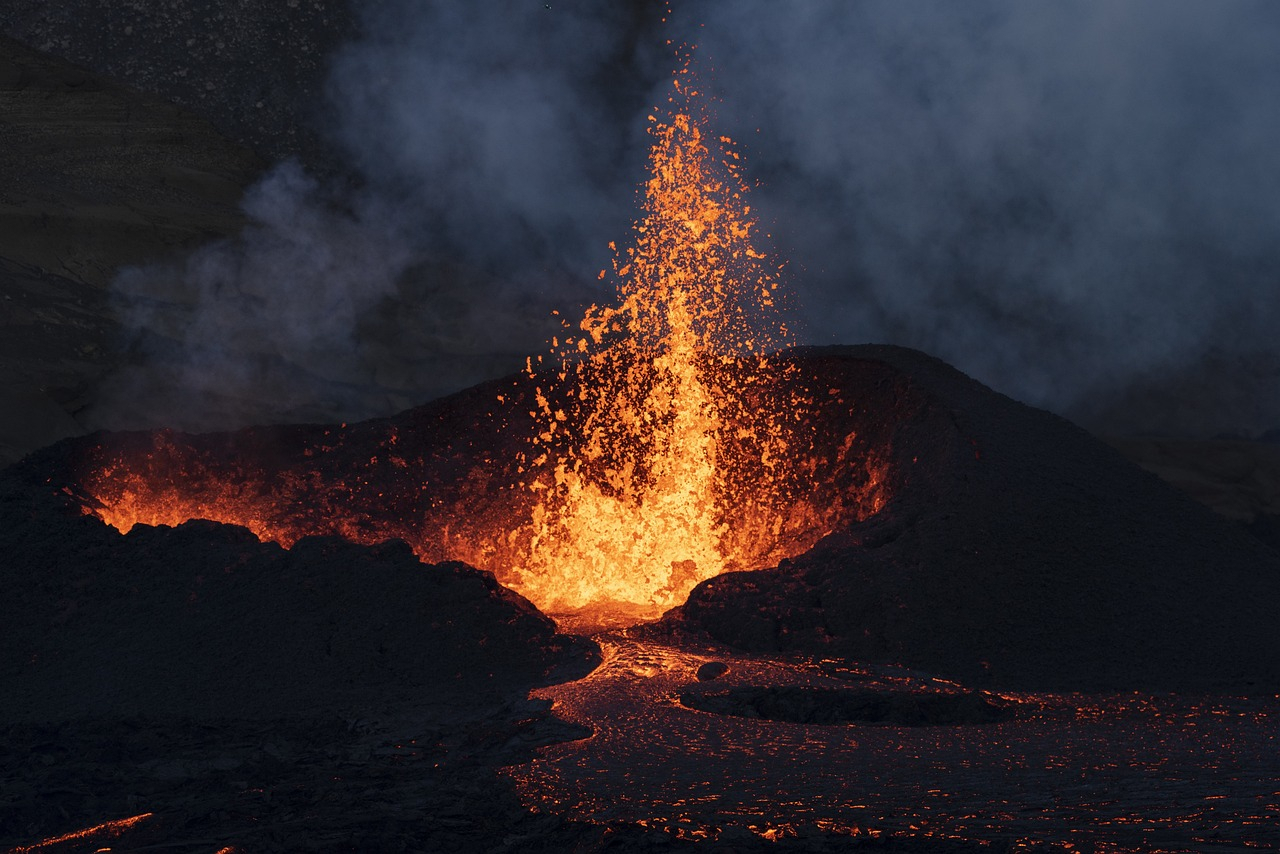The Eruption Between Hagafell and Stóri-Skógfell
On March 17, 2024, the Icelandic police announced a state of emergency after lava emerged from a new fissure on the Reykjanes Peninsula. This marks the fourth eruption to hit the area since December. "A volcanic eruption has begun between Stori-Skogfell and Hagafell on the Reykjanes Peninsula," stated the Icelandic Meteorological Office (IMO). Live video footage showcased the glowing lava and smoke plumes, painting a dramatic scene against the Icelandic landscape.
The Icelandic Department of Civil Protection and Emergency Management dispatched a helicopter to pinpoint the exact location of the new fissure. Authorities also declared a state of emergency in response to the eruption, highlighting the significant impact of the event.
The Flow Towards Grindavik
According to the IMO, the eruption occurred near the same site as the previous one on February 8th. The lava was reportedly flowing southward, towards the dams built to protect the fishing village of Grindavik. "The southern front of the lava was just 200 meters [656 feet] from the barriers on the eastern side of Grindavik and was moving at a speed of about one km per hour," the IMO added later.
The national broadcaster RUV reported that when the eruption began, hundreds of people were evacuated from the Blue Lagoon thermal spa, one of Iceland's most significant tourist attractions. No flight disruptions have been reported at Keflavik, Iceland's main airport, ensuring that the impact on international travel was minimal.
Grindavik's Evacuation and Preparedness
The eruption site is located a few kilometers northeast of Grindavik, a coastal town with 3,800 residents, situated approximately 50 km (30 miles) southwest of the capital, Reykjavik. The town had previously been evacuated before the first eruption in December. On Saturday, a few residents who had returned to their homes were evacuated again, showcasing the ongoing threat posed by the volcanic activity.
Grindavik had been evacuated in November when the Svartsengi volcanic system awoke after nearly 800 years of dormancy due to a series of earthquakes that caused significant cracks in the ground north of the town. The volcano initially erupted on December 18th, sending lava towards Grindavik. A second eruption began on January 14th, directing lava towards the town. Defensive walls, reinforced after the first eruption, managed to halt part of the flow, but lava destroyed several buildings.
These eruptions, although brief, highlight Iceland's continual battle with its volcanic nature. Situated over a volcanic hotspot in the North Atlantic, the country is no stranger to eruptions and has developed extensive experience in dealing with them. The most disruptive recent eruption was that of Eyjafjallajokull in 2010, which sent massive ash clouds into the atmosphere, leading to the widespread closure of European airspace.
While there have been no confirmed deaths from the recent eruptions, a worker who fell into a fissure opened by the volcano is presumed missing, underscoring the dangers associated with such natural disasters.





